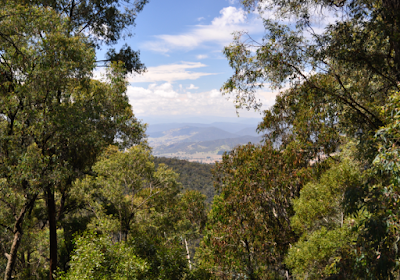The tree is the anchor on the other end of the tightrope and
I have used the concept of the Tree of Life to describe the tree. I have based
the symbols, represented by the different parts of the tree, on The Tree of
Life sessions as developed by the Dulwich Centre. See the link below for more
information.
http://dulwichcentre.com.au/the-tree-of-life/
The final group session: Our tree of life
This session was structured as follows:
Now that we have journeyed across the tightrope we have
reached the tree that has been our anchor. We can call this tree our tree of
life. It may be that abuse has sent us away from our tree and, if so, now is
the time to reconnect with it.
The roots and the ground
The roots of the tree are our strengths – what things give
us strength and who and what do we return to when we need strength?
The women in the group identified that the things that have
given them strength are: trust, carefulness, supportive people, hope,
respect, courage, creativity, wisdom, patience, resilience, caring, generosity,
confidence, friendship, pets and someone to confide in/ talk to/ trust/ lean
on.
The ground that our tree is growing in is about our current
lives and interests – what are the things we do regularly in our daily lives?
The group participants shared that the things they do
regularly in their daily lives include: doing
some craft each day:, eating healthy food; talking to someone; going for a
walk/ exercising; doing puzzles; reading; cleaning up and/ or organising;
watching a movie or DVD; doing something comforting; listening to music; gardening;
going out/ visiting; helping others; being a “bucket filler” by being kind and
friendly.
The trunk
The trunk is our skills and abilities:
- What skills and abilities do we have?
- What skills and abilities do other people think we have?
- Where did we learn these skills?
- How long have we had them?
The responses from the women included these skills and abilities:
coping skills; survival skills; assertiveness;
helping people; managing anxiety; walking away from bad situations; putting boundaries
in place; parenting; caring for the elderly; flexibility; craft skills; independence;
determination; being a good friend; honesty; being trustworthy and responsible;
being organised; calmness.
And they thought that they had leant these skills from: life and experience; parents, teachers,
friends and our children; good role models; bad role models (who teach us what
not to do); our experiences of abuse; people who tell us we can’t (and thus
make us more determined to show that we can).
The branches and leaves
The branches hold our hopes, dreams and wishes – what are
they and how long have we kept hold of them?
The women in the group said that their hopes, dreams and
wishes were: to be closer to our families; to have more personal space; to be debt
free/ win lotto; to be healthy; to be content and at peace; to have freedom.
The leaves are the people (and pets) who are important to us
(they may still be alive or they may have passed on) – who are these people
(and pets), what is special about them and what makes them important to us?
The people and pets that were important to the group participants
were: special friends; family members we
are close to; cats and dogs (our pets). And their thoughts about what is
special about them were that they: are
caring; are understanding; are trustworthy; don’t judge us; encourage us;
listen to us.
The fruits
The fruits of the tree are the gifts we have been given like
acts of kindness, care and love from others:
- What gifts have we been given?
- Why did these people give us these gifts?
- What gifts of kindness and caring do we give to others?
The gifts the women in the group saw themselves as having
been given included: friendship; respect;
teaching/ being shown how to do things; teaching us to be polite and
well-mannered; encouragement; renewal; hope; faith; love; insight; wise
thoughts; belief in ourselves; praise; purpose; forgiveness.
Their thoughts about why these people have given them these
gifts were because: they saw potential in
us; they were kind and caring; they love us; they want the best for us; they
have unconditional love.
And their ideas about the gifts of caring and kindness they
have given to others were: sharing ideas;
kindness; teaching new skills; caring; friendship.
The invisible man and the child had not yet been included in the tightrope metaphor when I facilitated this group, so I will cover them in future posts.








No comments:
Post a Comment